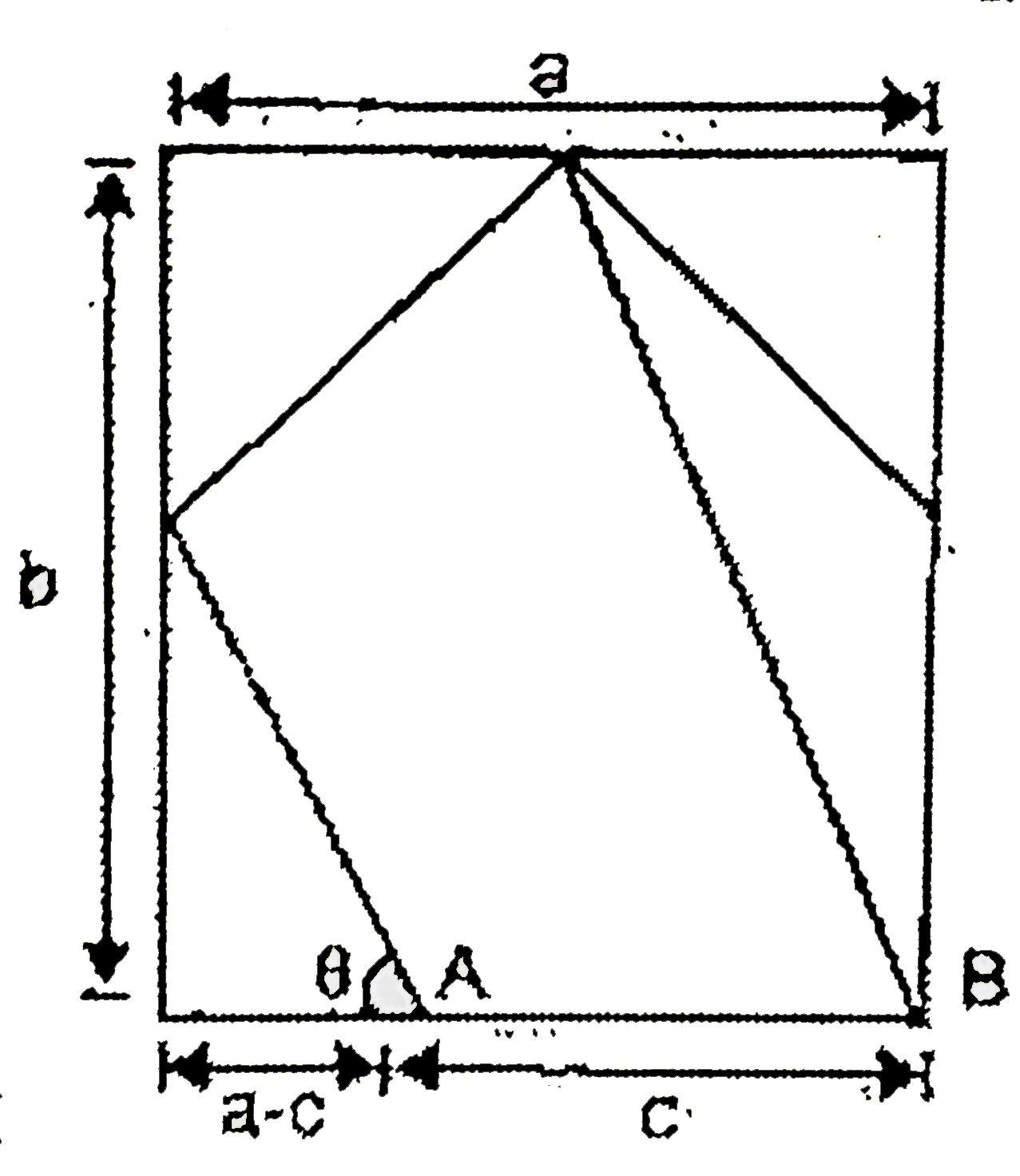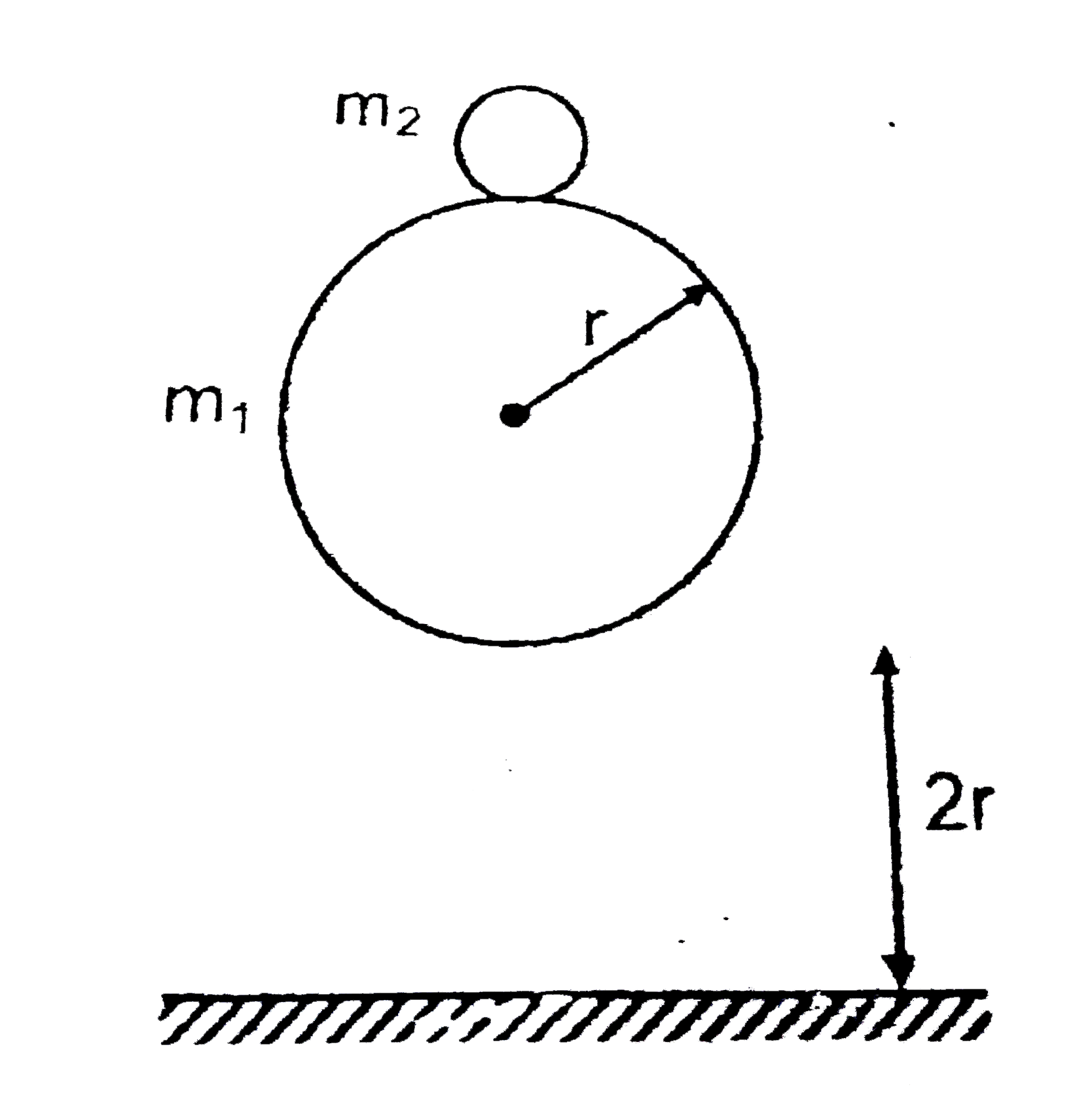Consider the collision depicted in Figure, to be between two billiard balls with equal masses m1=m2. The first ball is called the cue and the second ball is called the target. The billiard player wants to sink the target ball in a corner pocket, which is at an angle θ2=ϕ=37∘. Assume that the collision is elastic and that friction and rotational motion are not important. Obtain θ1=θ .
From momentum conservation, since the masses are equal
vli=vlf+v2f
or v2li=(v−(1f)+v2f).(v1f+v2f)
=v1f2+v2f2+2v1f.v2f
={v1f2+v2f2+2v1v2fcos(θ1+37∘)}............(i)
Since, the collision is elastic and m1=m2 it follows from conservation of kinetic energy that
v21t=v1f2+v2f2......................(ii)
Comparing Eqs. 1) and 2), we get
cos(θ1+37∘)=0
or θ1+37∘)=0
Thus, θ1=53∘.
This proves the following result, when two equal masses undergo a glancing elastic collision with one of them at rest, after the collision, they will move at right angles of each other.
Related Playlists
Similar Practice Problems
- Question 1 - Select One
A billiards player hits a stationary ball by an identical ball to pocket the target ball in a corner pocket that is at an angle of 35∘ with respect to the direction of motion of the first ball. Assuming the collision as elastic and that friction and rotational motion are not important, the angle made by the target ball with repect to the incoming ball is
A35∘B50∘C55∘D60∘ - Question 1 - Select One or More
Which one of the following statement does not hold good when two balls of masses m1 and m2 undergo elastic collision
AWhen m1<<m2 and m2 at rest, there will be maximum transfer of momentumBWhen m1>>m2andm2 at rest, after collision the ball of mass m2 moves with four times the velocity of m1CWhen m1=m2 and m2 at rest, there will be maximum transfer of K.E.DWhen collision is oblique and m2 at rest with m1=m2 after collision the balls move in opposite direction. - Question 1 - Select One
A spherical ball of mass m1 collides head on with another ball of mass m2 at rest . The collision is elastic . The fraction of kinetic energy lost by m1 is :
A4m1m2(m1+m2)2Bm1m1+m2Cm2m1+m2Dm1m2(m1+m2)2 - Question 1 - Select One
A spherical ball of mass m1 colliddes head on with another ball of mass m2 at rest . The collision is elastic . The fraction of kintic energy lost by m1 is :
A4m1m2(m1+m2)2Bm1m1+m2Cm2m1+m2Dm1m2(m1+m2)2 - Question 1 - Select One
Two balls of equal masses m each undergo oblique collision. If colision is perfectly elastic, then angle between their velocities after collision is
Aπ4Bπ3Cπ6Dπ2
Similar Questions
A billiard table whose length and width are as shown in the figure. A ball is placed at point A. at what angle θ the ball be projected so that after colliding with two walls, the ball will fall in the pocket B? assume that all collisions are perfectly elastic: (neglect friction)
 View Solution
View SolutionA particle of mass m is projected towards a wall such that the angle of incidence is θ and the speed just before collision is u. Assuming that the wall is smooth and the collision is elastic, show that the ball rebounds at same angle.
View SolutionTwo balls of equal masses m each undergo oblique collision. If colision is perfectly elastic, then angle between their velocities after collision is
View SolutionA particle of mass m is projected towards a wall such that theangle of incidence is θ and the speed just before collision is u. Assumming that the wall is smooth and the collision is elastic,show that the ball rebonunds at same angle.
View Solution
A small ball of mass m2 rests on the top of a bigger ball of mass m1(>>m2. The centre of bigger ball is at height 3r above ground as shown. The balls are dropped from this situation. If the smaller ball bounces to a height 4 nr from ground after its first collision with bigger ball. find n. (Assume all collisions are elastic).View Solution

